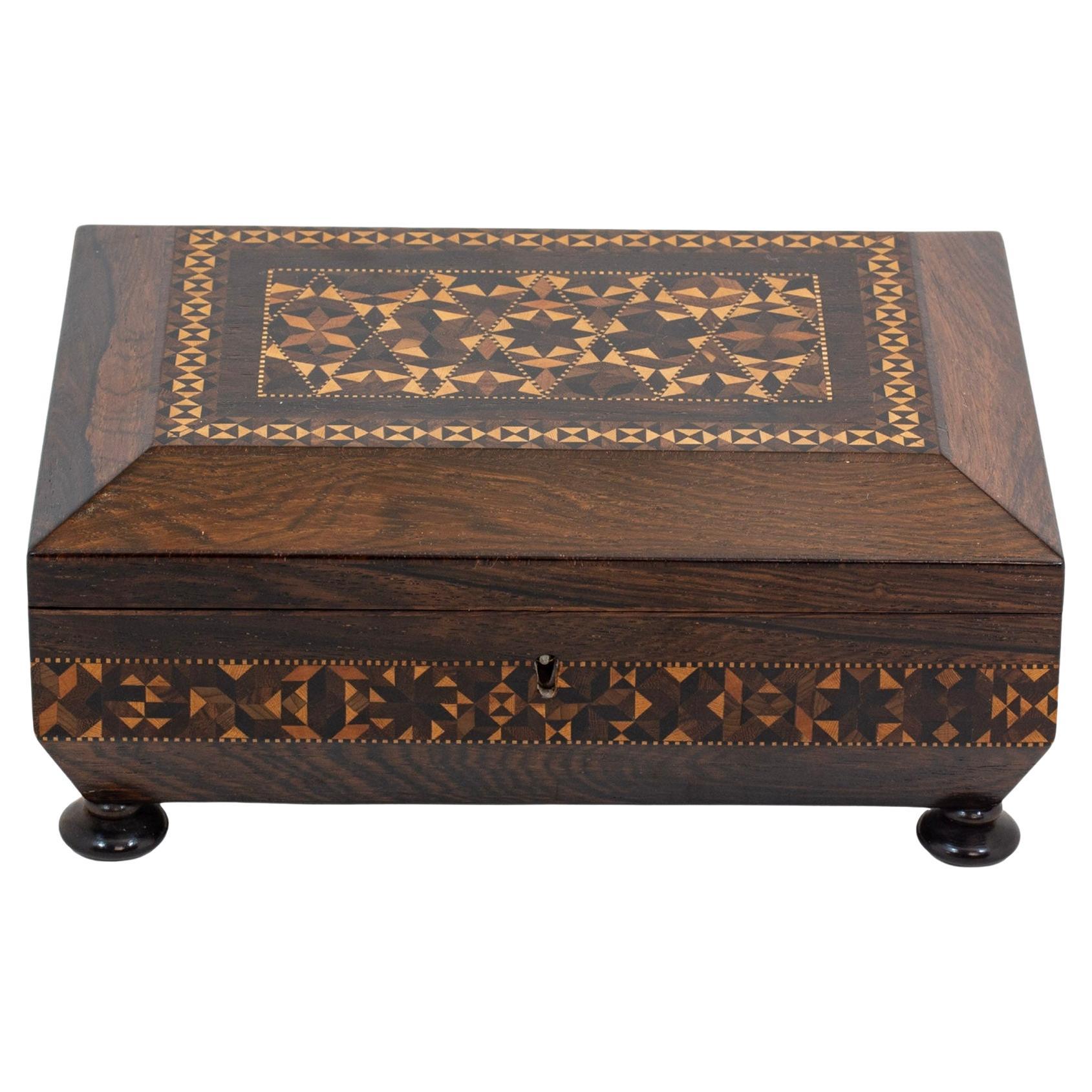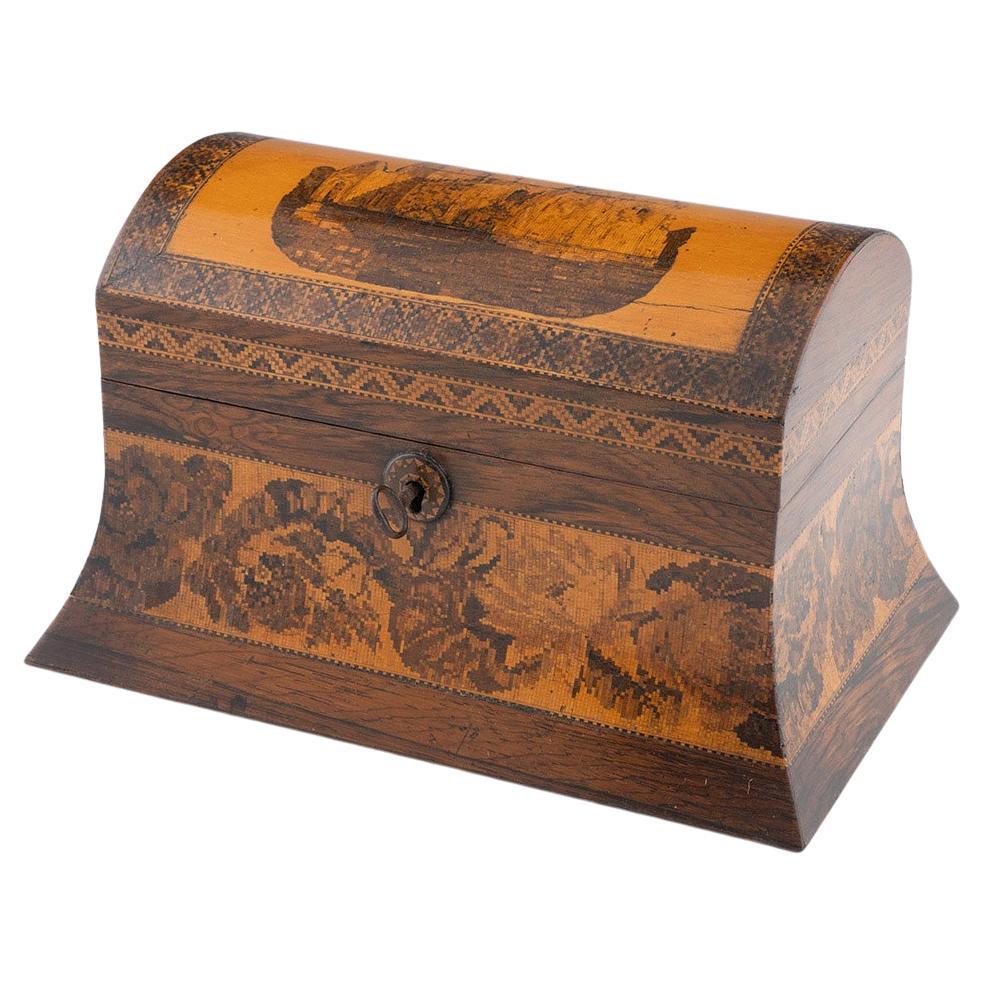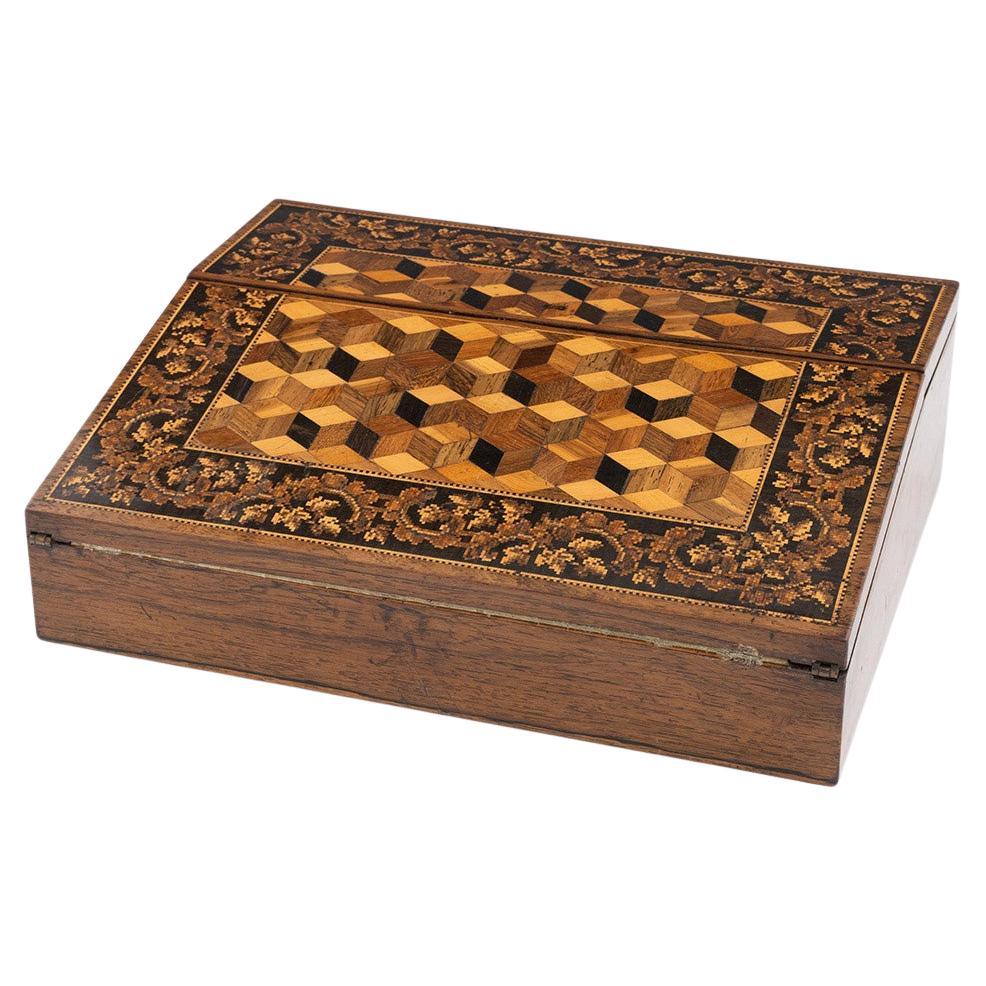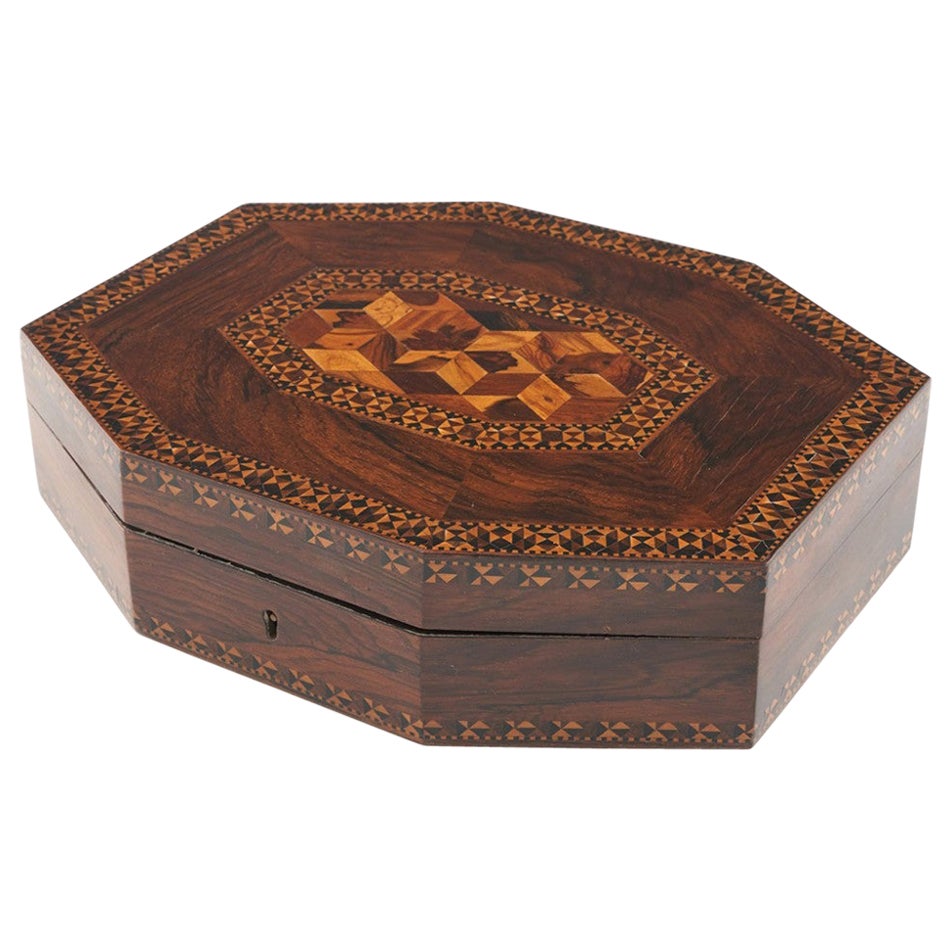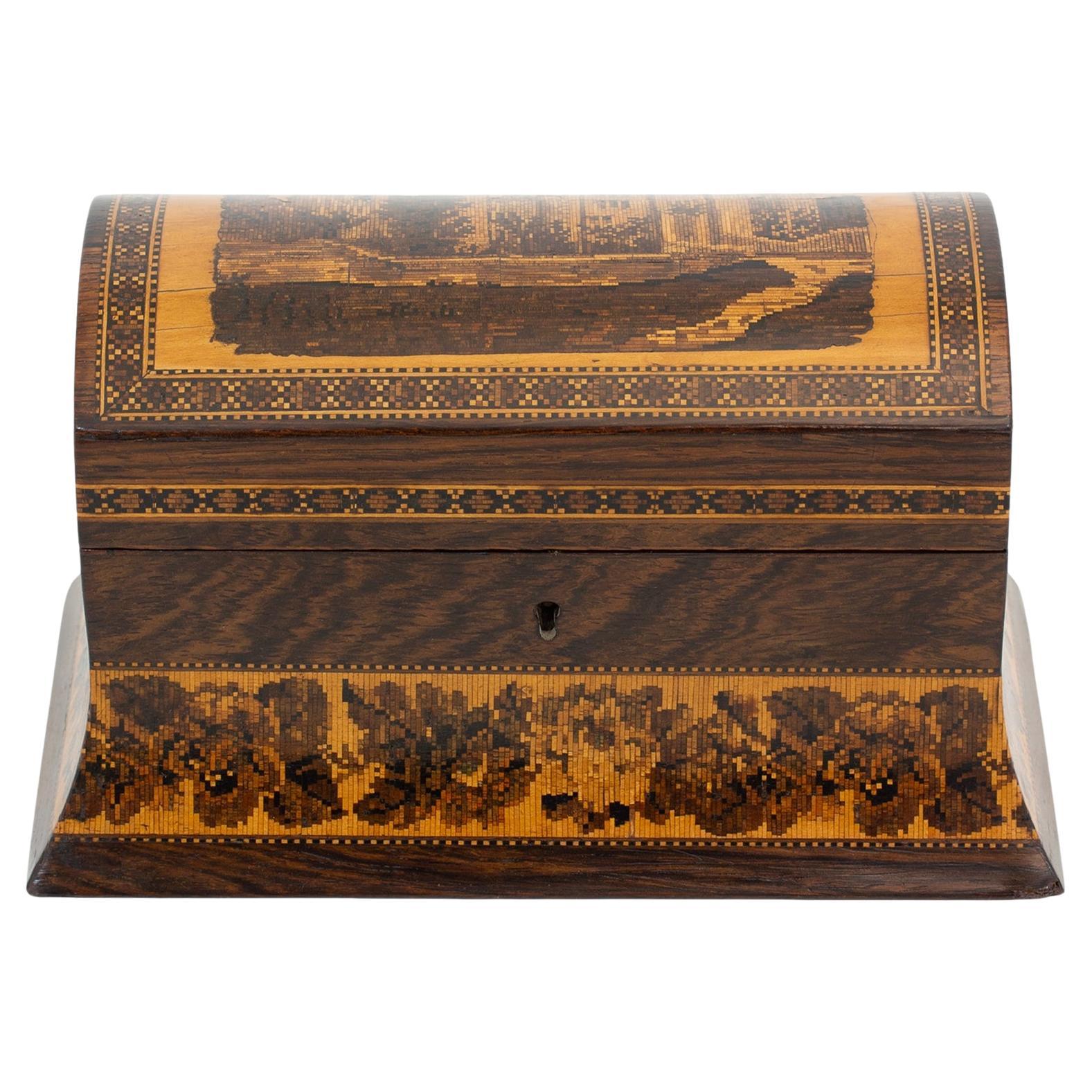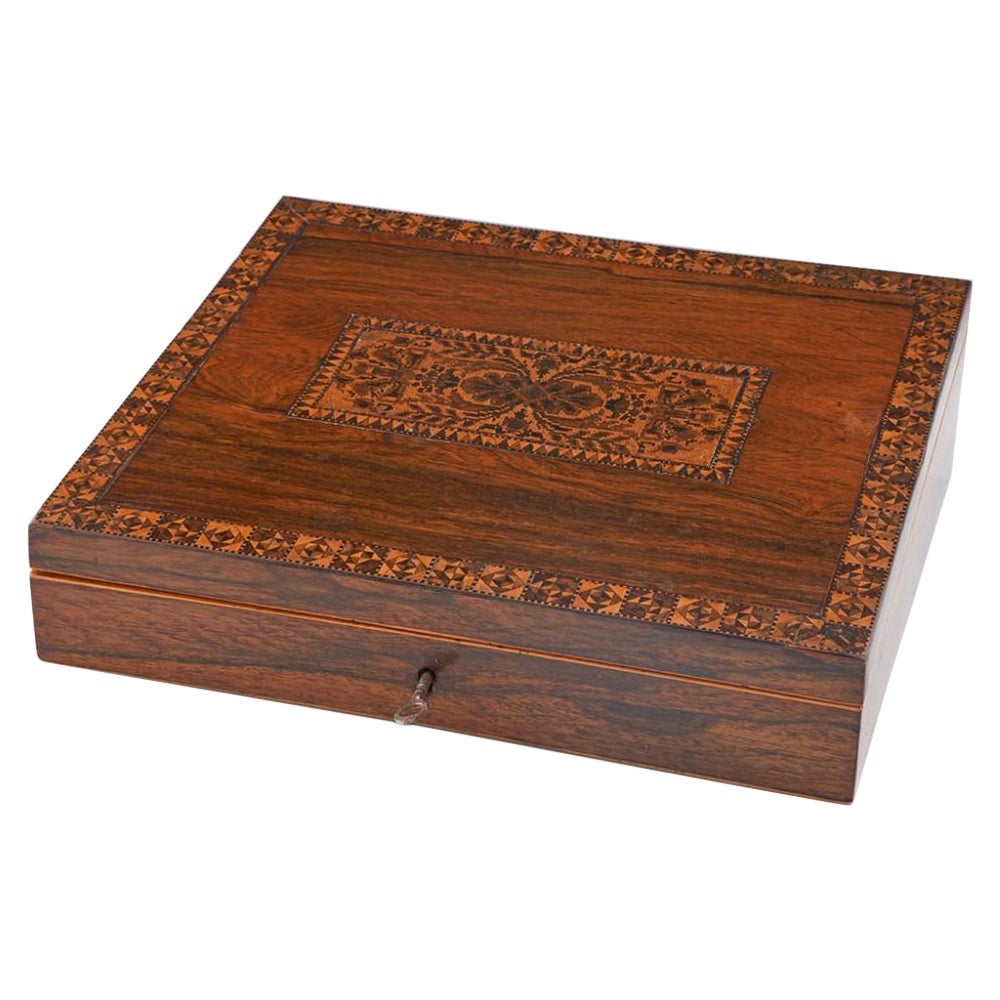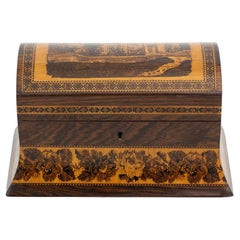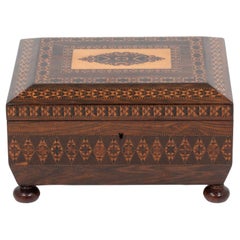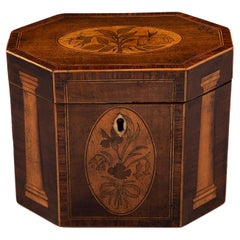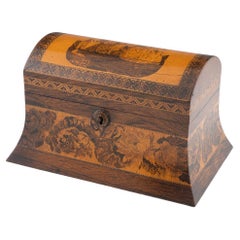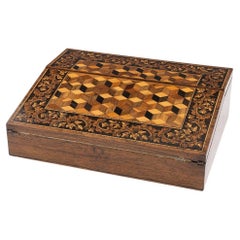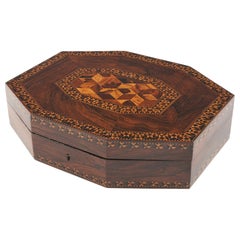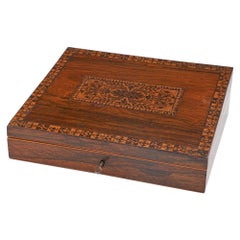Items Similar to Antique English Georgian Tunbridge Ware Brighton Pavilion Sewing Compendium
Want more images or videos?
Request additional images or videos from the seller
1 of 11
Antique English Georgian Tunbridge Ware Brighton Pavilion Sewing Compendium
$17,772.60
£12,900
€15,064.70
CA$24,607.41
A$26,865.40
CHF 14,084.43
MX$326,290.69
NOK 175,891.63
SEK 166,088.60
DKK 112,441.93
About the Item
Rare Tunbridge Ware Form Sewing Compendium
From our Tunbridge Ware collection, we are delighted to offer this very rare Tunbridge Wear Sewing Compendium. The Sewing Compendium modelled as a tower from the Brighton Pavilion features the iconic minaret turned in Sycamore and a large globular body with hand-painted details leading to further turned faces and the hand-painted windows upon a stepped base. The Sewing Compendium opens in three locations one just below the first dome revealing a pin cushion, the second just above the windows revealing the Sewing tools including a Tunbridge Ware thimble and bobbin and the third at the base for storing needles etc. The Tunbridge Ware Sewing Compendium dates to the Georgian era during the reign of George IV circa 1825.
Measurements (inches) 8.27 High x 3.54 Diameter
Brighton Pavilion, The Royal Pavilion and surrounding gardens are a Grade I listed property and were the former Royal residence located in Brighton, England. It was built in 1787 in three stages as a seaside retreat for George, Prince of Wales who became the Prince Regent in 1811 and then King George IV in 1820. It is built in the Indo-Saracenic style prevalent in India for most of the 19th century. The current appearance of the Pavilion which has various domes and minarets, is the work of architect John Nash, who extended the building starting in 1815. George IV’s successors William IV and Victoria also used the Pavilion but Queen Victoria decided that Osborne House should replace the Pavilion as the royal seaside retreat and therefore the Pavilion was sold to the city of Brighton in 1850.
Indo-Sarascenic refers to a cross between Indian architecture and Muslim architecture.
Minarets means beacon in Arabic. In Islamic religious architecture, the tower from which the faithful are called to prayer five times each day by a muezzin, or crier. Such a tower is connected to a mosque and has one or more balconies or open galleries. The inspiration for the minarets features on the Brighton Pavilion are in homage to these types of finials.
John Nash (1752-1835) was one of the most prevalent British architects from the Georgian and Regency periods. He was responsible for the design, in the neoclassical and picturesque styles of many important areas of London. He was financed by the Prince Regent and by the era’s most successful property developer, James Burton. Nash’s most famous designs were the Brighton Pavilion, Marble Arch and Buckingham Palace.
Sycamore is a member of the Maple family, found in Europe. It is light yellow in colour and is often a very clean wood, with a straight, fine grain. The wood is often pippy. However, these pips are usually a very similar colour to the rest of the wood making them hardly visible.
Georgian, a period in British history dating from 1714-1837, the Georgian era after the Hanoverian kings George I, George II, George III and George IV.
Tunbridge Ware
Tunbridge Wells and Tunbridge in Kent, England became popular in the 17th Century for their therapeutic waters. By the 18th century, Tunbridge Wells was a hugely popular Spa resort. Shops and stalls were set up to sell local work of distinction to visitors as souvenirs. Many of the original boxes were decorated with all sorts of different kinds of designs. Many of the Tunbridge boxes had a central image with views of castles, churches, pavilions, animals, country scenes and sometimes people, such as the Young Prince of Wales. These were surrounded by a variety of bandings and panels of floral and geometric designs. Tunbridge Ware items originate from the beautiful spa town of Royal Tunbridge Wells in Kent. We always have a very good selection which showcases the techniques of tessellated mosaic, stick ware, perspective cube mosaic, vandyke and painted pen work. We always have a selection of artworks and pieces which showcase the techniques of tessellated mosaics, stick ware, perspective cube mosaics, vandykes and painted pens.
- Creator:Tunbridge Ware (Manufacturer)
- Dimensions:Height: 8.27 in (21 cm)Diameter: 3.55 in (9 cm)
- Style:George IV (Of the Period)
- Materials and Techniques:
- Place of Origin:
- Period:
- Date of Manufacture:Circa 1825
- Condition:Wear consistent with age and use.
- Seller Location:Northampton, GB
- Reference Number:Seller: 5015591stDibs: LU8027245477592
About the Seller
No Reviews Yet
Vetted Professional Seller
Every seller passes strict standards for authenticity and reliability
Established in 1998
1stDibs seller since 2023
33 sales on 1stDibs
- ShippingRetrieving quote...Shipping from: Northampton, United Kingdom
- Return Policy
Authenticity Guarantee
In the unlikely event there’s an issue with an item’s authenticity, contact us within 1 year for a full refund. DetailsMoney-Back Guarantee
If your item is not as described, is damaged in transit, or does not arrive, contact us within 7 days for a full refund. Details24-Hour Cancellation
You have a 24-hour grace period in which to reconsider your purchase, with no questions asked.Vetted Professional Sellers
Our world-class sellers must adhere to strict standards for service and quality, maintaining the integrity of our listings.Price-Match Guarantee
If you find that a seller listed the same item for a lower price elsewhere, we’ll match it.Trusted Global Delivery
Our best-in-class carrier network provides specialized shipping options worldwide, including custom delivery.More From This Seller
View AllAntique Georgian Tunbridge Ware Sewing Box
By Tunbridge Ware
Located in Northampton, GB
With a Fitted Sewing Box Interior
From our Tunbridge Ware collection, we are delighted to offer this Tunbridge Ware Sewing Box. The Rosewood box of rectangular form extensively inla...
Category
Antique Mid-19th Century English William IV Decorative Boxes
Materials
Wood
Victorian Rosewood Tunbridge Ware Tea Caddy
By Tunbridge Ware
Located in Northampton, GB
Dome Topped Tea Caddy
From our Tunbridge Ware collection, we are delighted to offer this Victorian Coromandel Tunbridge Ware Tea Caddy. The Tea Ca...
Category
Antique Late 19th Century English High Victorian Tea Caddies
Materials
Wood
Antique English Tunbridge Ware Sewing Box
By Tunbridge Ware
Located in Northampton, GB
Fitted Tunbridge Ware Sewing Box Interior
From our Tunbridge Ware collection, we are delighted to offer this Tunbridge Ware Sewing Box. The Rosewood box of rectangular form extensiv...
Category
Antique Mid-19th Century English Early Victorian Decorative Boxes
Materials
Wood
Antique English George III Inlaid Tea Caddy
Located in Northampton, GB
From our Tea Caddy collection, we are pleased to offer this Georgian octagonal Inlaid Tea Caddy. The Tea Caddy of octagonal form veneered in Harewood with inlaid twin Tuscan Columns ...
Category
Antique Late 18th Century English Georgian Tea Caddies
Materials
Boxwood
Georgian Original Painted Sycamore Tea Caddy
Located in Northampton, GB
George III Circa 1785
From our Tea Caddy collection, we are delighted to offer this Rare Original Hand-Painted Sycamore Tea Caddy. The Tea Caddy of Octagonal form veneered in Sycamo...
Category
Antique Late 18th Century George III Tea Caddies
Materials
Sycamore
Antique English Georgian Glazed Silk Embroidered Tea Caddy
Located in Northampton, GB
Octagonal Shape with Glazed Panels
From our Tea Caddy collection, we are delighted to bring to market this wonderful example Georgian Glazed Silk Embroidered Tea Caddy. The Tea Cad...
Category
Antique Late 18th Century English George III Tea Caddies
Materials
Glass, Wood, Boxwood, Satinwood
You May Also Like
Very Rare Tunbridge Ware Box with Dover Church and Pharos
By Tunbridge Ware
Located in Tunbridge Wells, GB
Heading : Tunbridge ware box with image of Dover Church and Pharos
Date : c1860
Period : Victoria
Origin : Probably Tunbridge Wells, Kent
Decoration : Central mosaic of Dover Chu...
Category
Antique 1860s British Victorian Decorative Boxes
Materials
Wood
Tunbridge Ware Writing Slope by William Upton c1860
By Tunbridge Ware
Located in Tunbridge Wells, GB
Heading :Tunbridge ware writing slope by William Upton c1860
Date : c1860
Period : Victoria
Origin : Brighton, East Sussex
Decoration : Central perspective cubework with foliate ...
Category
Antique 1860s British Victorian Decorative Boxes
Materials
Wood
Tunbridge Ware Sewing Box c1840
By Tunbridge Ware
Located in Tunbridge Wells, GB
Heading : Tunbridge ware sewing box
Date : c1840
Period : Victoria
Origin : Tunbridge Wells, Kent
Decoration : Central perspective cube patte...
Category
Antique 1840s British Victorian Decorative Boxes
Materials
Wood
Tunbridge Ware - An Early Writing Slope with Geometric Designs, c1835
By Edmund Nye Tunbridge Wells
Located in Tunbridge Wells, GB
Tunbridge Ware - An Early Writing Slope with Geometric Designs, c1835
Additional Information:
Heading: Tunbridge Ware - An Early Writing Slope with Geometric Designs
Date : c1835
...
Category
Antique 19th Century English William IV Decorative Boxes
Materials
Rosewood
Walnut domed top Needlework/Jewellery Box
Located in Folkestone, GB
An early 19th century walnut domed topped needlework or jewellery box with two doors enclosing three drawers. Decorated with a panel of satinwood in the top and two penwork sketches...
Category
Antique Early 19th Century European Georgian Decorative Boxes
Materials
Walnut
Tunbridge Ware Tea Caddy by Thomas Barton c1870
By Tunbridge Ware
Located in Tunbridge Wells, GB
Heading : Tunbridge ware tea caddy by Thomas Barton c1870
Date : c1870
Period : Victoria
Origin : Tunbridge Wells, Kent
Decoration : Central floral mosaic with dentil stringing. ...
Category
Antique 1870s British Victorian Tea Caddies
Materials
Wood
More Ways To Browse
Antique Sorter
Antique Compendium
English Early 17th Century Furniture
Antique Mosque
Antique Balcony
Sycamore Antique Furniture
Brighton Pavilion
Prince Regent
Islamic Architecture
Pin Cushion
Used Furniture Brighton
Garden Pavilion
Royal Pavilion
Tower Model
Architectural Model Of A Dome
Pavilion Antiques
Indian Regency Early 19th Century
Antique Tunbridge Box
